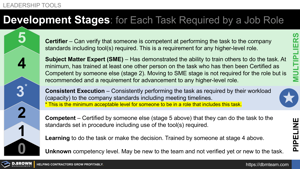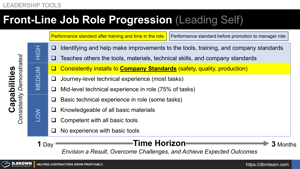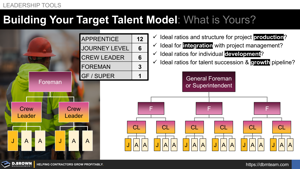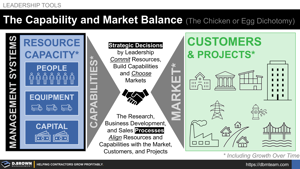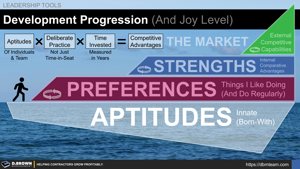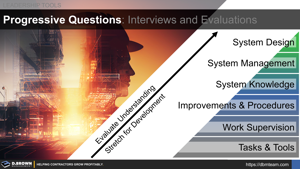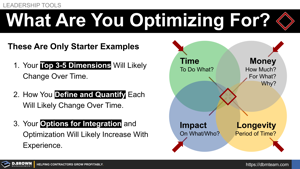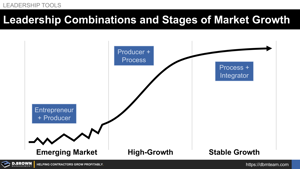Development Stages for Each Task Required by a Job Role
You can accelerate someone’s development with a consistent method for evaluating their progress from learning to consistent execution. Your growth is further accelerated by those who develop into multipliers of others.
development management talentFront-Line Job Role Progression (Leading Self)
Clarity around job role expectations, progression paths, timelines (min/max), and required resources is the foundation for building people, projects, and construction companies.
management Organizational Development talentBuilding Your Target Talent Model
Talent is the most constrained resource in the construction industry through at least 2030. With the industry's growth outlook, the contractors with the best Talent Value Streams (TVS) will dramatically outperform. Sadly, there will also be failures.
business planning management talentThe Capability and Market Balance (The Chicken or Egg Dichotomy)
Sustainable growth for contractors requires balancing capabilities and capacity with the available market. Like balancing on the toes of one foot, balance is not a static relaxed state. It requires focus, continuous adjustments, and deliberate practice.
planning strategy talentDevelopment Progression (And Joy Level)
We’re all born with aptitudes waiting to be discovered or developed. From the start, we form preferences. How those preferences become strengths—and how we use them in life and business—shapes both our joy and competitiveness.
management talentIntelligence Progression from Fluid to Crystallized
Understanding fluid versus crystallized intelligence is critical for hiring, training, organizational structures, workflows, and retirement planning.
retirement succession talentProgressive Questions for Interviews, Evaluations, and Development
Asking progressively higher-level questions helps assess capabilities while allowing you to stop before making the other person feel inadequate. These questions are valuable for development—answering them is like exercise for the brain.
interviews talentWhat Are You Optimizing For?
Prioritizing is about sequencing. Optimizing is about balance. Both are defined by your values, strategies, and objectives. Both are constrained by your finite resources including talent and capital. Start by knowing what you are optimizing for.
career strategy talentLeadership Combinations and States of Market Growth
There is a beautiful tension in leadership teams that is required for growth. That tension shifts with different stages of a market's growth and must be integrated with the contractor's stage of growth as a company.
market strategy Organizational Development talentSuccession and the 2024 Olympics as an Example
Succession in any job role should be looked at like the USA Team in the Mixed 4x400 Relay Race at the 2024 Olympics. This is especially true for ownership transitions for construction contractors. Learn more about this 4-step process.
ownership transition succession talent